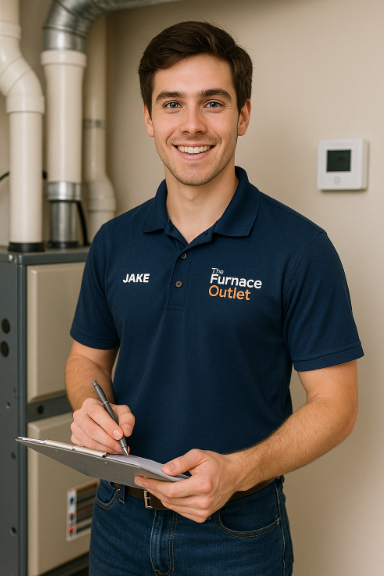Hey everyone, Jake Lawson here. If you’re searching for flexible cooling solutions, you’ve probably heard about portable AC unit 110V, 110v portable air conditioner, or simply 110 portable AC. Today, I want to break down everything you need to know about these convenient systems—from how they work and their benefits to tips on choosing the right unit for your home or workspace.
Portable AC units are increasingly popular because they deliver effective cooling without the need for permanent installation. Understanding their features, installation requirements, and maintenance needs will help you get the most out of your investment.
What Is a 110V Portable Air Conditioner?
A 110V portable air conditioner is a self-contained cooling unit that plugs into a standard household outlet. Unlike central AC systems, it doesn’t require hardwiring or extensive ductwork, making it ideal for apartments, rental units, offices, or rooms without existing HVAC connections.
Key features include:
-
Portability: Rollable units that can be moved from room to room.
-
Plug-and-Play Operation: Uses standard 110V outlets for easy installation.
-
Compact Design: Fits in smaller spaces without permanent construction.
-
Cooling Capacity: Suitable for single rooms, typically ranging from 8,000 to 14,000 BTUs.
For a comprehensive overview of portable AC benefits, check out Energy Star’s guide to room air conditioners.
How a 110 Portable AC Works
A 110 portable AC operates on the same basic principles as larger AC systems:
-
Air Intake: The unit draws warm air from the room into its evaporator coil.
-
Cooling Cycle: Refrigerant absorbs heat from the air, cooling it as it passes through the coil.
-
Exhaust Management: Some units vent hot air through a hose to a window or wall, while self-evaporating models recycle condensation internally.
-
Air Distribution: Fans blow cooled air back into the room, creating a comfortable environment.
For technical details on how portable air conditioners function, visit HVAC.com’s AC guide.
Benefits of a 110V Portable AC Unit
Choosing a portable AC unit 110V comes with several advantages:
1. Easy Installation
No need for professional installation—just plug it in, vent if necessary, and turn it on.
2. Flexibility
Move your 110v portable air conditioner between rooms as needed, making it ideal for temporary or seasonal use.
3. Cost-Effective
Lower upfront costs than installing a central AC system.
4. Energy Efficiency
Many models come with programmable thermostats, timers, and energy-saving modes to reduce power consumption.
For comparisons and efficiency ratings, see Consumer Reports – Portable Air Conditioners.
Types of 110V Portable Air Conditioners
When shopping for a 110 portable AC, you’ll encounter a few different types:
1. Single-Hose Units
-
Draws air from the room, expelling hot air through a single exhaust hose.
-
Slight negative pressure may pull warm air from other areas.
2. Dual-Hose Units
-
Uses one hose to draw air from outside and another to expel hot air.
-
More efficient than single-hose models, especially in larger rooms.
3. Self-Evaporating Models
-
Recycles condensation within the system, reducing the need for manual draining.
-
Ideal for homes without easy access to a window vent.
For guidance on selecting the right type, check Energy.gov’s portable AC overview.
Sizing Your 110V Portable AC Unit
Proper sizing ensures your 110v portable air conditioner cools efficiently:
-
Small Rooms (up to 300 sq. ft.): 8,000–10,000 BTUs.
-
Medium Rooms (300–500 sq. ft.): 10,000–12,000 BTUs.
-
Large Rooms (500–700 sq. ft.): 12,000–14,000 BTUs.
Oversized units can cycle too quickly, causing humidity issues, while undersized units may struggle to maintain comfort.
For tips on sizing and calculating BTUs, see PickHVAC’s BTU guide.
Installation Tips for Your 110V Portable AC
Installing a portable AC unit 110V is straightforward, but a few tips can improve performance:
-
Window Placement: Ensure the exhaust hose reaches a nearby window for vented models.
-
Level Surface: Place on a flat, stable floor for proper drainage and operation.
-
Clear Airflow: Keep the area around the unit free of obstructions.
-
Seal Gaps: Use window kits or sealing panels to prevent hot air from entering.
These simple steps optimize cooling and prevent energy waste.
Maintenance for 110v Portable Air Conditioners
Maintaining your 110v portable air conditioner ensures longevity:
-
Clean Filters Regularly: Dust and allergens reduce efficiency.
-
Drain Water Tanks: For units that collect condensation manually.
-
Check Exhaust Hoses: Ensure they are free of kinks and properly venting.
-
Annual Inspection: Examine coils, fans, and electrical connections for wear.
Proper maintenance helps your portable AC unit stay efficient and quiet for years.
For detailed maintenance tips, visit Energy Star – Room AC Maintenance.
When a 110V Portable AC Is the Right Choice
A 110 portable AC is ideal for:
-
Apartments or rentals where permanent installation isn’t allowed.
-
Temporary cooling for offices, garages, or workshops.
-
Supplemental cooling for bedrooms or small living areas.
-
Travel or seasonal use in cabins, tents, or RVs (with proper power supply).
Portable units offer versatility that larger systems can’t match, especially when mobility is important.
Conclusion
For homeowners seeking flexibility, affordability, and efficient cooling, a portable AC unit 110V or 110v portable air conditioner is a smart solution. From single-room comfort to temporary cooling needs, these systems deliver convenience without the hassle of permanent installation.
For those looking for a more permanent, high-performance solution, the Goodman 3-Ton 14.5 SEER2 R32 Bundle offers top-tier energy efficiency, reliable performance, and eco-friendly R32 refrigerant—perfect for complementing or replacing existing AC setups.







